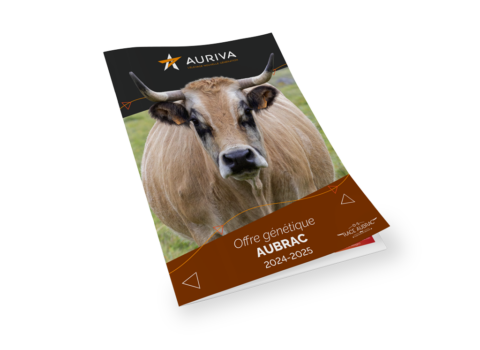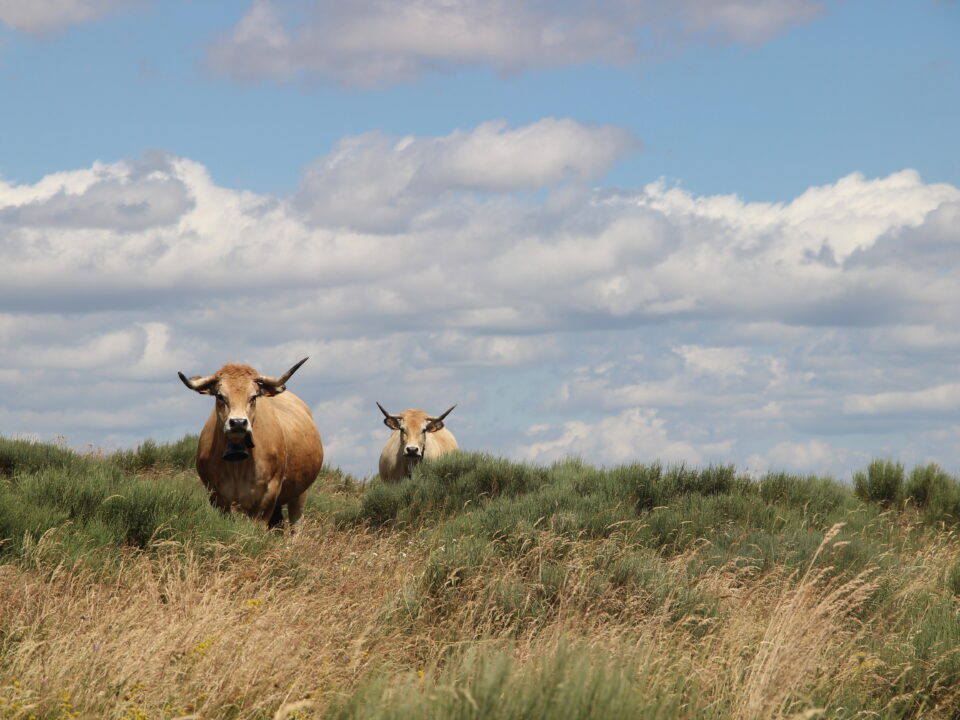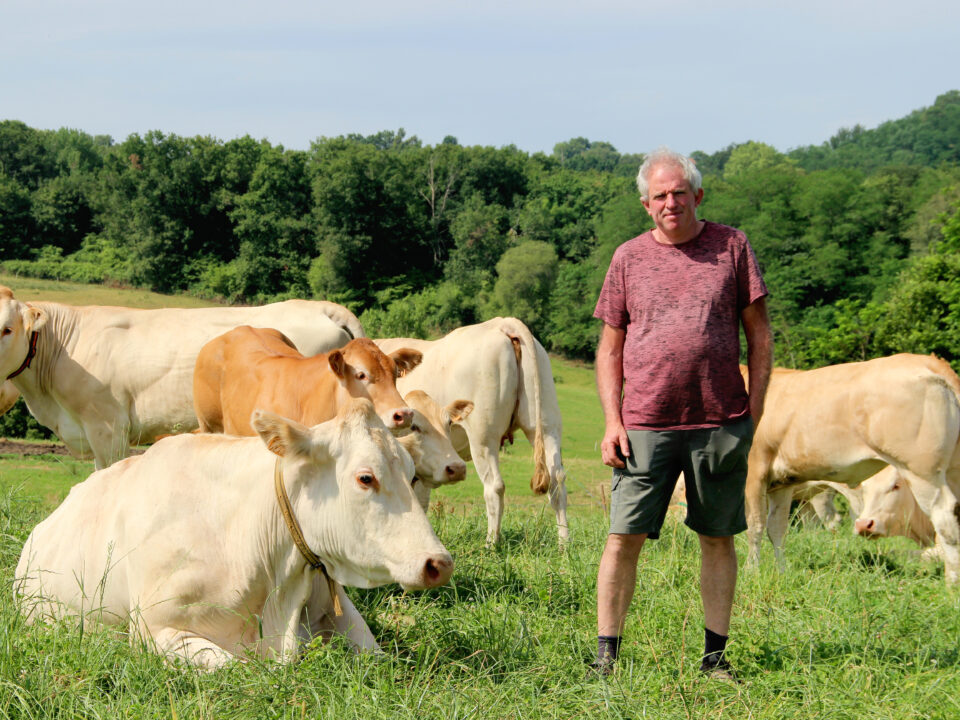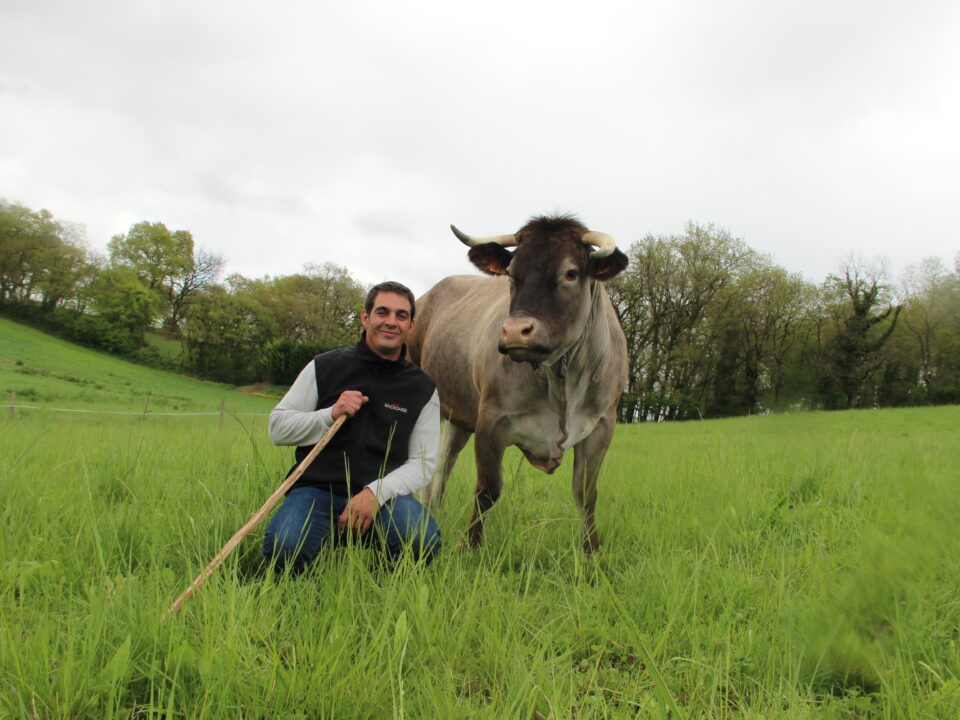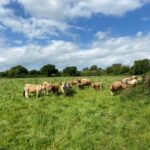
Breeding practices: how do our Irish neighbors do it?
29 April 2025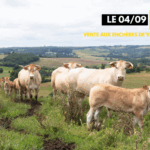
Auction of Blonde d’Aquitaine cows and heifers
11 July 2025Genetic progress in the Aubrac breed: focus on embryo transplantation

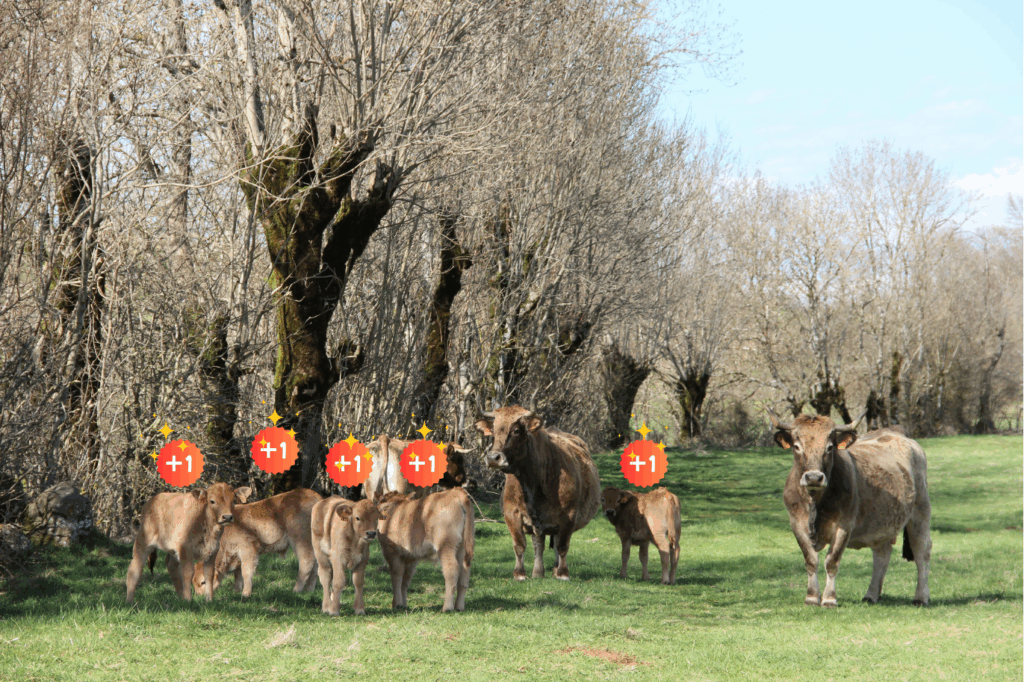
Thanks to the partnership between AURIVA’s technical services and COOPELSO’s Embryo Transplantation (TE) department, Aubrac breeders have a real lever for accelerating genetic progress. This system gives access to top-quality genetics to both existing breeders and newcomers.
TE is a major asset: it enables us to develop and multiply the best strains while reducing the generation interval, thus accelerating progress within the herd. All this is supported by an experienced field team, guaranteeing rigorous, personalized technical follow-up.
In this article, we meet two Aveyron breeders: Emilien Soulenq and Laurent Lemmet, who use this Coopelso / AURIVA-Elevage service. They share with us their experience and the concrete benefits they derive from it.

Emilien SOULENQ
Partner in GAEC SOULENQ, user of AURIVA and TE COOPELSO services for 2 years - Mur de Barrez (12)
Settled with his mother since 2022 following his father’s retirement, Emilien became interested in embryo transplantation on the advice of Patrice Fabre, Aubrac AURIVA technician. His objective: to multiply the genetics of one of the best cows in the herd: ” It all started with IMPERIALE (ELAN/VULCANIA), a cow that did very well with us. We put three of her calves on the station, and today I have many of her daughters and granddaughters in the herd. She was 11 years old when we decided to collect her for the first time. “.
During this first collection, IMPERIALE produced 9 embryos. Two were placed fresh directly on recipients in the herd, two others were frozen for breeding, and five were resold by AURIVA. The following season, Emilien decided to repeat the experiment, this time with IMPERIALE and two other cows from the farm. Result: 10 embryos for IMPERIALE, including 5 directly transferred.
“For me, it‘ s been a very positive experience! The operation is relatively simple, and we’re very well supported: by our inseminator, the Auriva race technician, and the Coopelso embryo transplant team. It’s a real team effort .
Émilien’s objective is clear: to preserve this excellent line, by keeping the females on the farm and using the males for breeding: “It’s an opportunity to promote and highlight all the genetic work done on our farm over the years”.

On a practical level, he stresses the importance of limiting stress during embryo transfer: “When an embryo is placed on a recipient, the key word is to avoid stress. This year, we placed them in mid-March. To avoid a sudden change in feed between the barn and the field, our technicians advised us to put the recipients directly outside with hay after the transfer. They were able to take advantage of an early exit and this limited the stress involved in a change of diet.
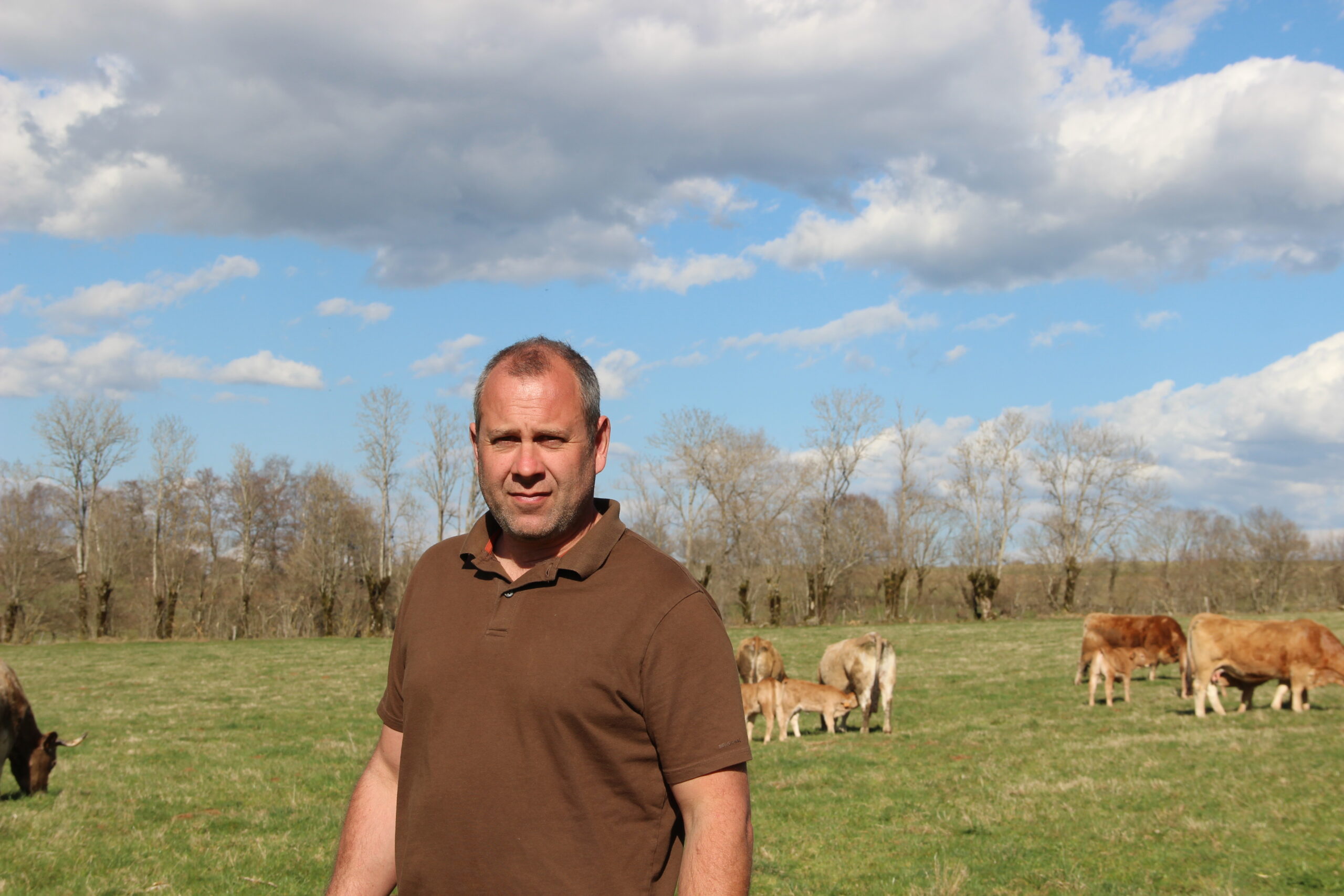
Laurent LEMMET
Manager of SCEA PONS, user of AURIVA and TE COOPELSO services for 10 years - Argences en Aubrac (12)
Laurent took over his grandfather’s farm in Argences-en-Aubrac, Aveyron, in 2006. Gradually, he enrolled his best cows in the Herdbook and developed a passion for genetic selection and competitions. In 2016, on the advice of his Coopelso inseminator, Christophe Clamens, he began embryo transplantation: “As a genetics enthusiast, I wanted to move forward faster, and above all to have access to genetics that were unavailable on the market. Thanks to embryos, we can recover the genetics of very good maternal strains whose daughters would never have been sold”.
In the early days, some saw her approach as marginal, but today, the results speak for themselves: “I’ve seen a marked increase in my score, and that’s thanks to the embryos! On a technical level, Laurent pays particular attention to the health of his donors and recipients. “We keep a close eye on the uterine condition of the donors before each collection: no metritis, for example. I give boluses 15 days to 3 weeks before the collection. For the rest, the procedure remains conventional until the superovulation hormone treatment.
As for the recipients, he prefers to think ahead: “I usually plan for twice as many ready-to-receive females as the number of embryos to be placed. You never know, I prefer to have a plan B. “. He explains that ET means working with living things: despite a well-mastered technique, the result is never guaranteed. You have to accept that sometimes things don’t work out “. Finally, he stresses the importance of technical support: “I listen carefully to the advice of the embryo transplant team and Christophe, my inseminator”.
Laurent carried out six collections between 2016 and 2024 on five different cows. But it is above all in transfers that his involvement is measured: 53 embryos placed between 2016 and 2025. “I have an annual budget of €1,500 to €2,000 dedicated to embryos, depending on opportunities. I don’t buy breeding females, especially at the current price, I prefer to lay embryos. The added value for breeding is very real: the genetics of my herd have progressed rapidly, I can sell calves to the station and even present products from embryos in competitions. There’s only one thing I can say: may embryo transplants last!
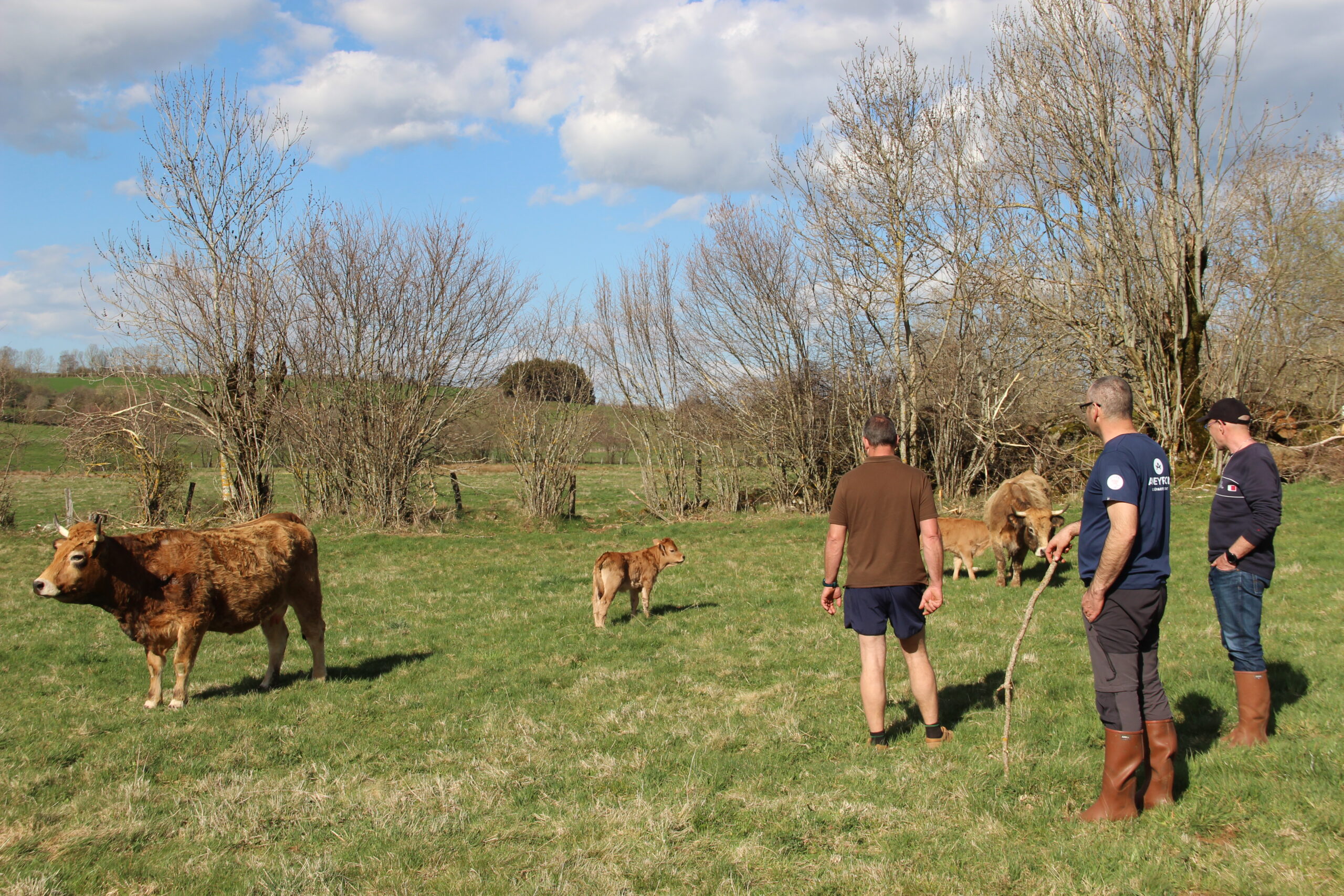

"There's a great dynamic in the area, with breeders motivated to develop the Aubrac breed thanks to the genetic techniques offered by AURIVA and Coopelso. In the 2023-2024 campaign, no fewer than 30 collections were carried out in the AUBRAC breed, with 124 embryos placed, representing a 23% increase since 2020. The Aubrac breed now accounts for 15% of Coopelso's embryo transplant activity. The new biotechnologies also enable us to support breeders in their desire to multiply strains, but also to ensure the survival of specific genetic traits, such as milk production, for example. This is the context in which embryo sexing operations are carried out every year.
Camille VAQUIER - Technicien de transplantation embryonnaire Coopelso
